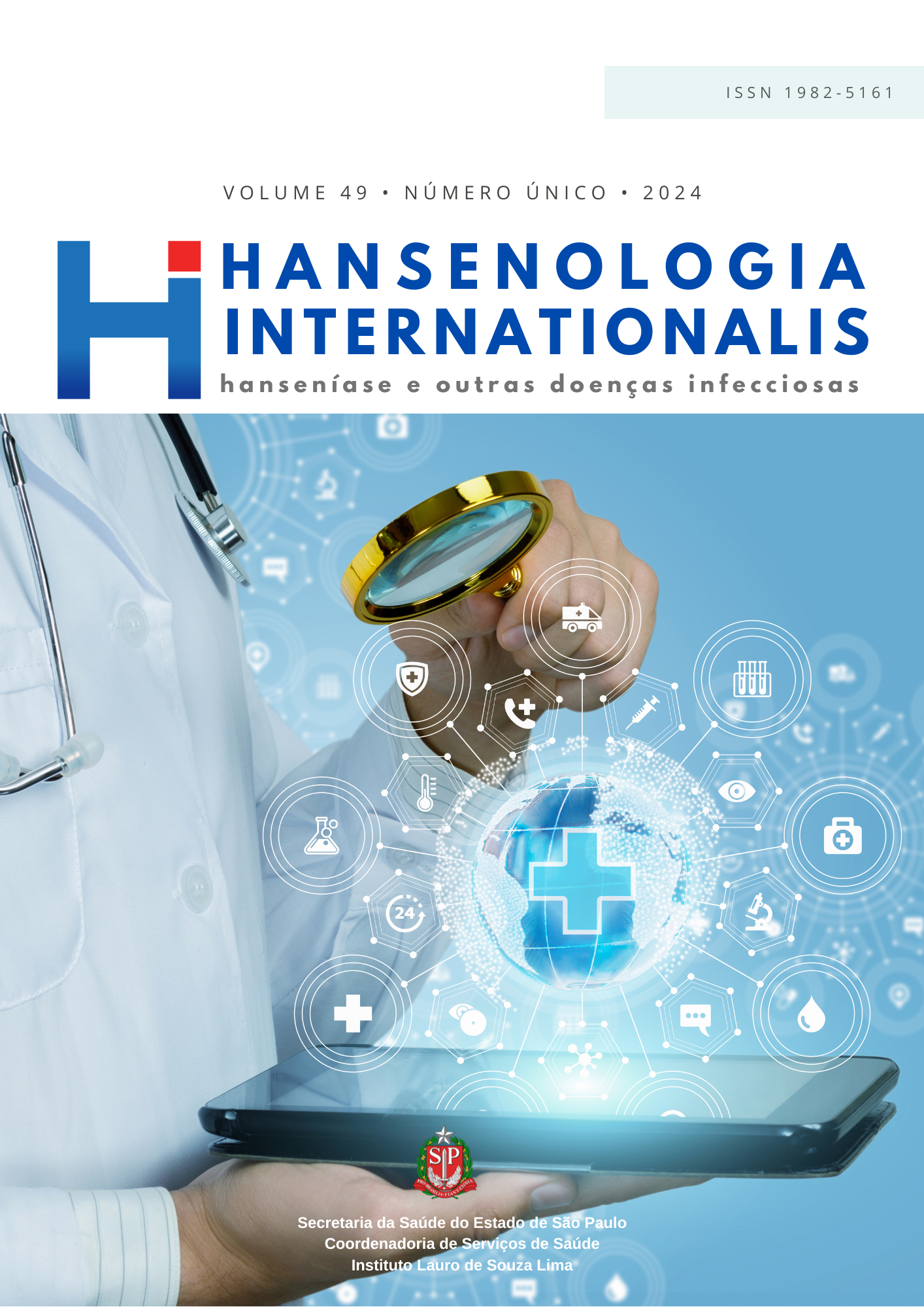Abstract
Introduction: Hansen’s disease is caused by the bacillus Mycobacterium leprae, which affects the skin and peripheral nervous system. It is highly endemic in Brazil. Negative social representations about leprosy are the result of historical beliefs and fears. Health education is a recommended strategy by Brazil’s Ministry of Health to reduce the burden of leprosy. Lack of health information is one of the obstacles to reducing the incidence of the disease. Objective: this study aims to identify the level of knowledge that the patients at a dermatology outpatient clinic have about leprosy. Methods: this is a cross-sectional observational study, that utilized a nine-question leprosy questionnaire and was administered to patients at a public hospital dermatology outpatient clinic in Pernambuco. Results: five hundred people answered the questionnaire. The majority of respondents were women over the age of 60. Approximately 92% of respondents were aware of leprosy/Hansen’s disease, but less than half correctly identified it as the same disease. Furthermore, only 50.4% of respondents had any knowledge about the disease. The identification of skin lesions was the most well-known symptom, while transmission and treatment were less familiar. Conclusion: therefore, it is evident that health education measures aimed at improving knowledge about the transmission and treatment of leprosy are crucial, particularly among health, educators, and media professionals. Additionally, conducting more studies to assess the population’s knowledge of the disease is necessary to address the lack of information and enable professionals to combat leprosy and prejudices more effectively.
References
1. Ministério da Saúde (BR). Secretaria de Vigilância em Saúde. Estratégia Nacional para Enfrentamento da Hanseníase: 2019-2022. Brasília, DF: Ministério da Saúde; 2019. [acesso em 07 mar. 2023]. Disponível em: https://bvsms.saude.gov.br/bvs/publicacoes/estrategia_nacional_enfrentamento_hanseniase_2019.pdf.
2. Ministério da Saúde (BR). Secretaria de Vigilância em Saúde. Departamento de Vigilância das Doenças Transmissíveis. Diretrizes para vigilância, atenção e eliminação da hanseníase como problema de saúde pública: manual técnico-operacional [Internet]. Brasília (DF): Ministério da Saúde; 2016. [acesso em 15 jun. 2023]. Disponível em: https://portal.saude.pe.gov.br/sites/portal.saude.pe.gov.br/files/diretrizes_para_._eliminacao_hanseniase_-_manual_-3fev16_isbn_nucom_final_2.pdf.
3. Pescarini JM, Strina A, Nery JS, Skalinski LM, Andrade KVF, Penna MLF, et al. Socioeconomic risk markers of leprosy in high-burden countries: a systematic review and meta-analysis. PLoS Negl Trop Dis. 2018 Jul 9;12(7):e0006622. doi: https://doi.org/10.1371/journal.pntd.0006622.
4. Palmeira IP, Queiroz ABA, Ferreira MA. Marcas em si: vivenciando a dor do (auto) preconceito. Rev Bras Enferm. 2013 Nov;66(6):893-900. doi: https://doi.org/10.1590/S0034-71672013000600013.
5. World Health Organization. Leprosy [Internet]. Geneva: WHO; 2023. [updated 2023 Jan; cited 2023 Apr 12]. Available from: http://www.who.int/mediacentre/factsheets/fs101/en/.
6. Ministério da Saúde (BR). Protocolo clínico e diretrizes terapêuticas da hanseníase (Internet). Brasília: Ministério da Saúde; 2022. [acesso em 12 abr. 2023]. Disponível em: https://www.gov.br/saude/pt-br/assuntos/saude-de-a-a-z/h/hanseniase/publicacoes/protocolo-clinico-e-diretrizesterapeuticas-da-hanseniase-2022.
7. Passos ÁLV, Araújo LF. Representações sociais da hanseníase: um estudo psicossocial com moradores de um antigo hospital colônia. Interações (Campo Grande). 2020 Jan;21(1):93-105. doi: https://doi.org/10.20435/inter.v21i1.1944.
8. Cobo B, Cruz C, Dick PC. Desigualdades de gênero e raciais no acesso e uso dos serviços de atenção primária à saúde no Brasil. Ciência & Saúde Coletiva. 2021;26(9):4021-32. doi: https://doi.org/10.1590/1413-81232021269.05732021.
9. Femina LL, Soler ACP, Nardi SMT, Paschoal VD. Lepra para hanseníase: a visão do portador sobre a mudança de terminologia. Hansen. Int. 2007 Jun;32(1):37-48. doi: https://doi.org/10.47878/hi.2007.v32.35192.
10. Naaz F, Mohanty PS, Bansal AK, Kumar D, Gupta UD. Challenges beyond elimination in leprosy. Int J Mycobacteriol. 2017 Jul-Sep;6(3):222-228. doi: https://doi.org/10.4103/ijmy.ijmy_70_17.
11. Silva PLN. Perfil de conhecimentos sobre hanseníase entre moradores de uma estratégia saúde da família. Hansen Int. 2012:37(2):31-9. doi: https://doi.org/10.47878/hi.2012.v37.36193.
12. Gomes FC, Oliveira TC, Araujo JER, Félix LG, Araújo KMFA. Conhecimento do usuário da atenção primária à saúde acerca da hanseníase. Rev enferm UFPE [Internet]. 2014 [acesso em 12 abr. 2023];8(supl. 2):3669-76. Disponível em: https://periodicos.ufpe.br/revistas/revistaenfermagem/article/view/10108/10580.
13. Alves DGT. O conhecimento de hanseníase entre estudantes de escolas públicas: conceitos e preconceitos [dissertação]. Belo Horizonte: Universidade Federal de Minas Gerais; 2020. [acesso em 13 abr. 2023]. Disponível em: https://repositorio.ufmg.br/handle/1843/36566.
14. Belachew WA, Naafs B. Position statement: Leprosy: Diagnosis, treatment and follow-up. J Eur Acad Dermatol Venereol. 2019 Jul;33(7):1205-13. doi: https://doi.org/10.1111/jdv.15569.

This work is licensed under a Creative Commons Attribution 4.0 International License.
Copyright (c) 2024 Rafael Ximenes Bandeira de Morais, André Luiz Belém Negromonte dos Santos, Angela Cristina Rapela Medeiros, Márcia Almeida Galvão Teixeira
